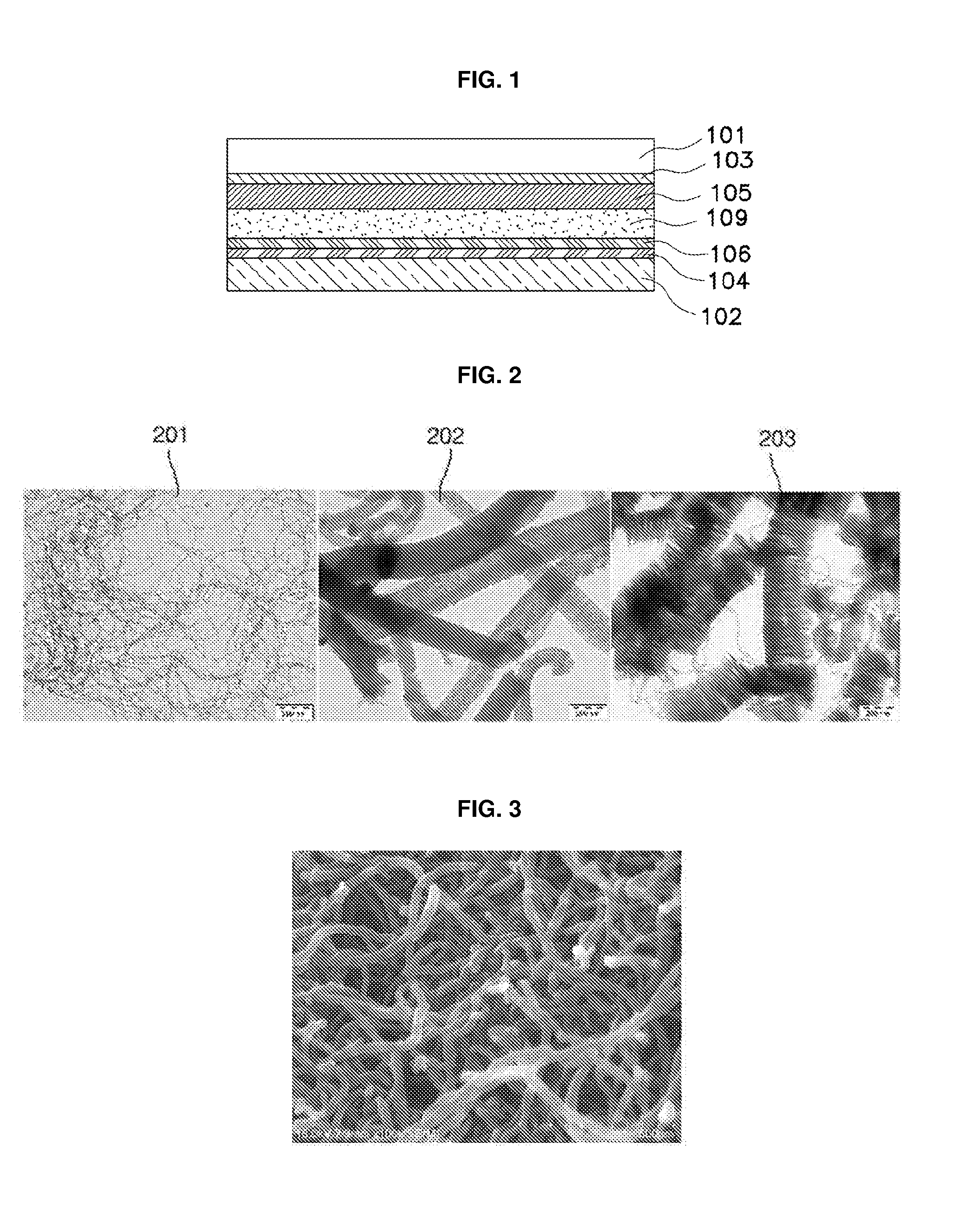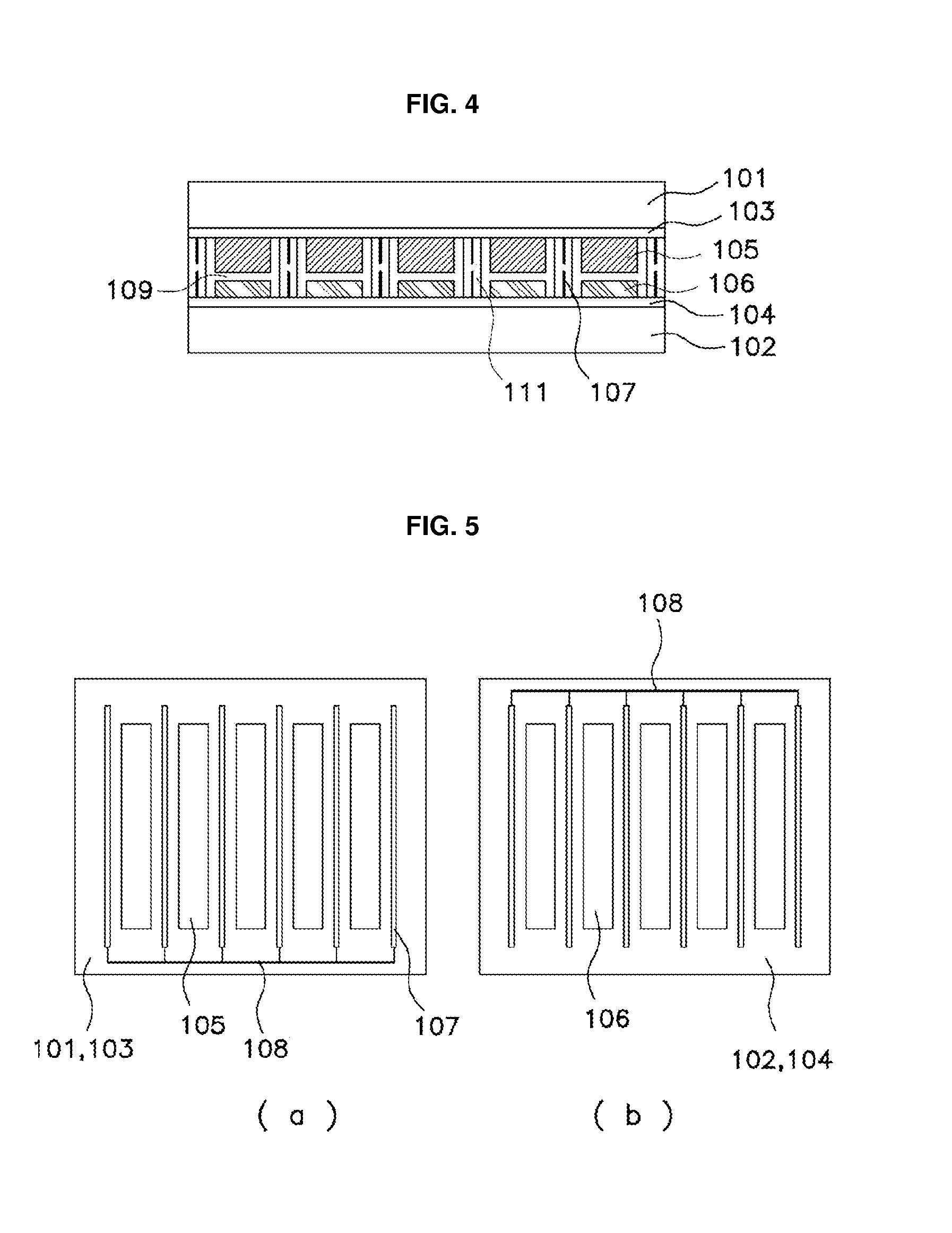Dye-sensitized solar cell module and the manufacturing method using carbon nanotube electrode
a solar cell and dye-sensitive technology, applied in the direction of cell components, final product manufacturing, sustainable manufacturing/processing, etc., can solve the problems of reducing the catalytic reaction rate of the cell is limited, and the efficiency of the solar cell is reduced. achieve the effect of high practical utility
- Summary
- Abstract
- Description
- Claims
- Application Information
AI Technical Summary
Benefits of technology
Problems solved by technology
Method used
Image
Examples
first embodiment
[0064]As shown in FIGS. 4 and 5, the dye-sensitized solar cell module having carbon nanotube electrodes, according to the present invention, comprises: the upper and lower transparent substrates 101 and 102; the conductive transparent electrodes formed on the inner surfaces of the upper and lower transparent substrates 101 and 102; the plurality of porous oxide semiconductor negative electrodes 105 formed on the upper conductive transparent electrode 103 at a constant interval and having a dye adsorbed on the surface thereof; the counter electrodes 106 formed on the lower conductive transparent electrode 104 in a thin film form and made of a carbon nanotube layer as a positive electrode portion corresponding to the negative electrodes; the grid electrodes 107 formed on the upper and lower conductive transparent electrodes 103 and 104 between unit electrodes, each consisting of the negative electrode and the counter electrode 106 corresponding thereto; the connecting electrodes 108 f...
second embodiment
[0067]As shown in FIG. 6, the dye-sensitized solar cell module having carbon nanotube electrodes, according to the present invention, comprises: the upper and lower transparent substrates 101 and 102; the conductive transparent electrodes on the inner surfaces of the upper and lower transparent electrodes 103 and 104; the plurality of porous oxide semiconductor negative electrodes 105 formed on the upper conductive transparent electrode 103 at a constant interval and having a dye formed on the surface thereof; the counter electrodes 106 formed on the lower conductive transparent electrode 104 in a thin film form and made of a carbon nanotube layer as a positive electrode portion corresponding to the negative electrodes; the grid electrodes 107 formed on the upper and lower conductive transparent electrodes 103 and 104 between unit electrodes, each consisting of the negative electrode and the counter electrode 106 corresponding thereto; the connecting electrodes 108 formed on the upp...
PUM
| Property | Measurement | Unit |
|---|---|---|
| thickness | aaaaa | aaaaa |
| size | aaaaa | aaaaa |
| thickness | aaaaa | aaaaa |
Abstract
Description
Claims
Application Information
 Login to View More
Login to View More - R&D
- Intellectual Property
- Life Sciences
- Materials
- Tech Scout
- Unparalleled Data Quality
- Higher Quality Content
- 60% Fewer Hallucinations
Browse by: Latest US Patents, China's latest patents, Technical Efficacy Thesaurus, Application Domain, Technology Topic, Popular Technical Reports.
© 2025 PatSnap. All rights reserved.Legal|Privacy policy|Modern Slavery Act Transparency Statement|Sitemap|About US| Contact US: help@patsnap.com



